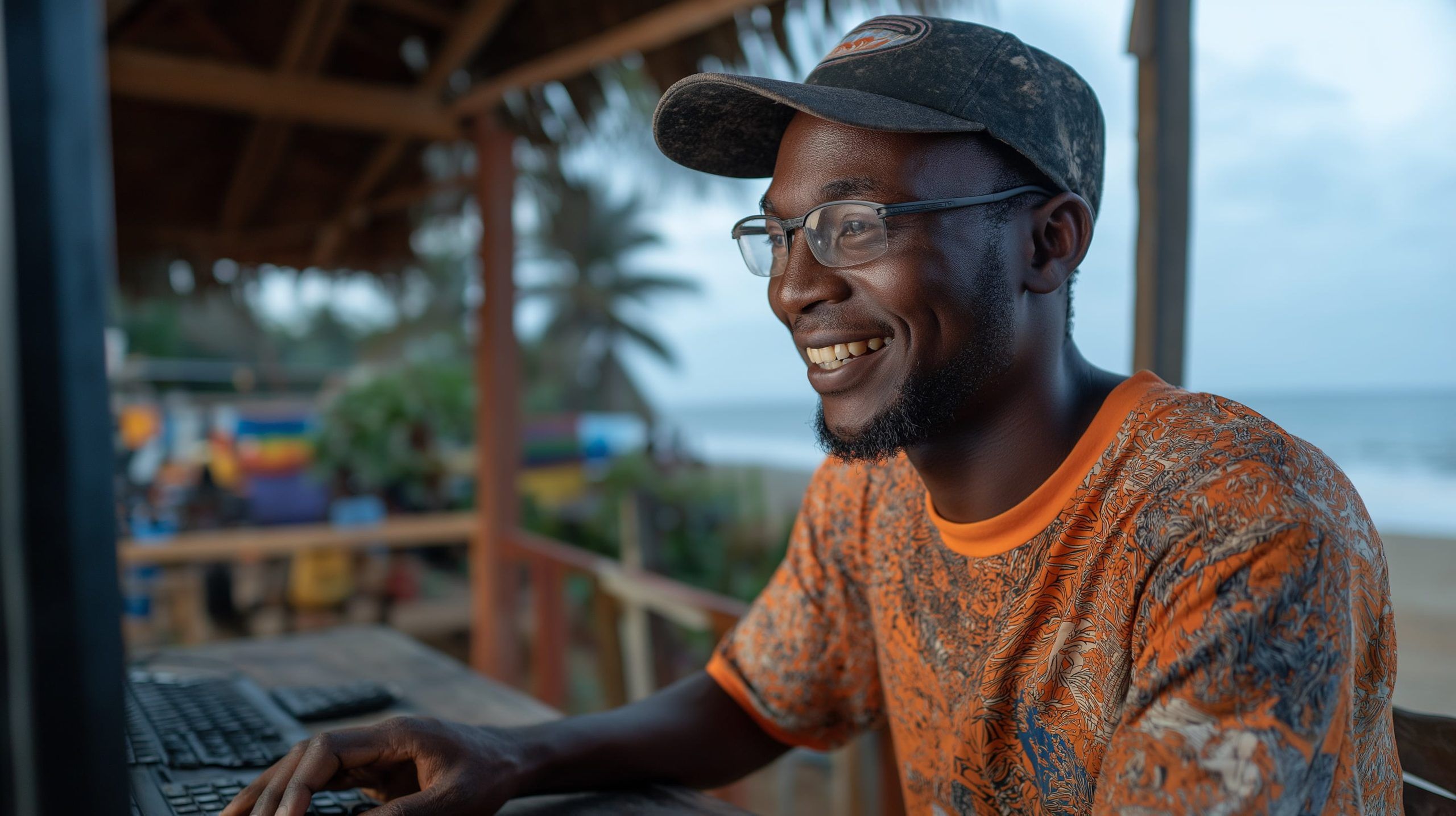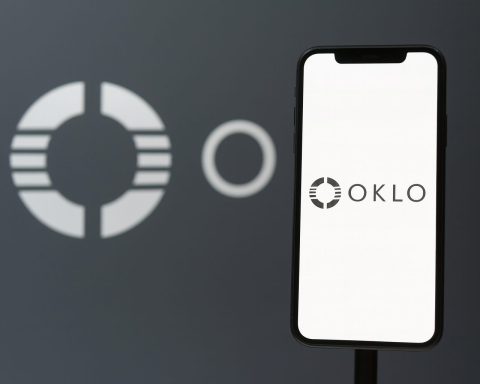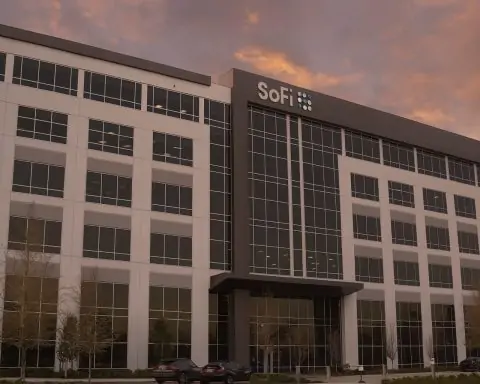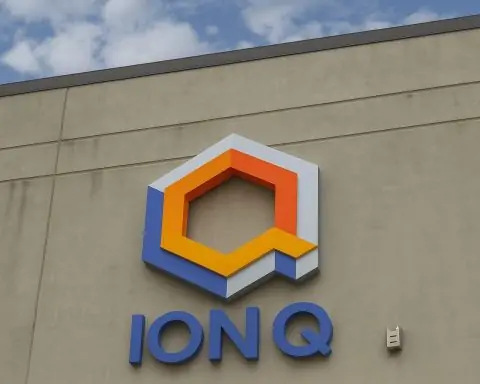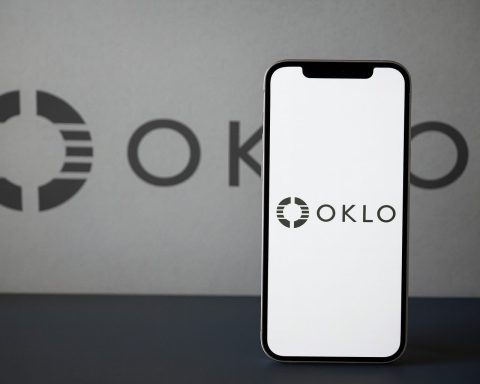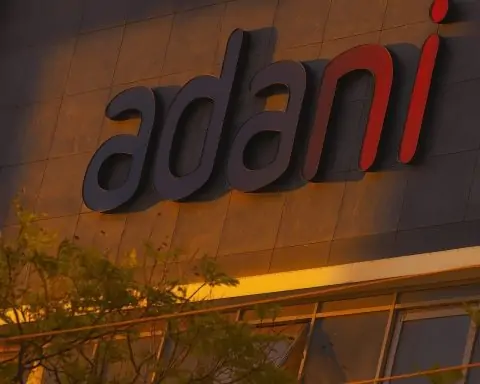- As of January 2025, internet penetration stands at 61.5% of the population (about 146,000 online) with around 170,000 active mobile connections.
- The Africa Coast to Europe (ACE) submarine cable landed in São Tomé in 2012–2013, with its final southern segment completed in 2021, increasing international bandwidth from about 50 Mbps to over 4,500 Mbps.
- CST accounts for about 95% of internet subscriptions, and Unitel STP entered the market in 2014 after a unified license granted in 2013 for $1.62 million.
- Unitel STP launched the first 4G LTE service in May 2023, and by 2025 4G is available in the capital and other key locales, with no 5G service yet.
- There is no local Internet Exchange Point (IXP); all traffic exits via international links, and the STP-Cabo landing company wholesales capacity to CST and Unitel.
- In 2024, mobile data costs around $2–$3 per GB, while fixed broadband costs about $85.78 per month and the fixed-broadband basket accounts for about 15.8% of GNI per capita.
- The 2014 telecom liberalization opened the market to a second operator and established open-access and price-cap rules under regulator AGER for ACE capacity.
- The Universal Access Fund (UAF) was created in 2013 to extend telecom services to underserved areas, and the World Bank’s Digital São Tomé and Príncipe Project (2022–2027) funds backbone upgrades, regulatory capacity, and digital-government initiatives with about $21 million.
- The Ultramar GE submarine cable deployed in 2018 links São Tomé to Annobón, enhancing regional connectivity and signaling potential intra-Gulf routing.
- Starlink has not been licensed in São Tomé and Príncipe as of mid-2025, but a few NGOs have used Starlink Roam, with speeds of 5–50 Mbps, latency around 50 ms, a $599 hardware kit, and regional monthly costs around $150 (or $500 for global roaming).
Overview of São Tomé and Príncipe’s Internet Landscape (2025)
São Tomé and Príncipe – a small island developing state in the Gulf of Guinea – has made notable strides in digital development over the past decade. As of early 2025, about 61.5% of the population (approximately 146,000 people) are internet users, a significant increase from previous years [1] [2]. This growth is driven largely by mobile connectivity and a major upgrade of international infrastructure. The country’s overall Internet Resilience Index score is low (29/100), indicating limited capacity to withstand outages [3] [4]. However, the government and partners have been actively working to improve digital access and quality. In this report, we explore the current state of internet access in São Tomé and Príncipe, including infrastructure, service types, providers, international links, usage statistics, costs, policies, satellite services, challenges, and the opportunities that better connectivity can unlock.
Internet Infrastructure and Digital Development Status
São Tomé and Príncipe’s internet infrastructure has historically been constrained by its small size and isolation. Until 2013, the country relied almost entirely on satellite links for international bandwidth, resulting in expensive, low-quality connectivity that limited business, education, and government applications [5]. Recognizing this bottleneck, the government (with World Bank support) invested in connecting to the Africa Coast to Europe (ACE) submarine fiber-optic cable. The ACE cable landing in São Tomé (completed around 2012–2013) dramatically improved international bandwidth and reduced costs [6] [7]. Following the ACE connection, international bandwidth usage in-country jumped from just 50 Mb/s (satellite era) to over 4,500 Mb/s within a few years, and wholesale bandwidth prices fell by ~72% (a 2 Mbps link dropped from $9,000 to $2,500 per month by 2014) [8] [9]. This infusion of capacity enabled faster speeds and more users to come online.
Domestically, the telecom infrastructure is modest but improving. The incumbent operator has rolled out basic fixed-line networks and some fiber links in the capital. By the end of 2013, 100% of localities had at least a minimal broadband connection (≥256 kbps), up from 56% in 2010 [10] [11]. Average download speeds for users are still relatively low – around 23 Mbps for both fixed broadband and mobile as of 2023 [12] – but represent a huge leap from the dial-up and 2G era. Key facilities such as the ACE cable landing station in São Tomé and a spur linking to the island of Príncipe (and even a link from São Tomé to Equatorial Guinea’s Annobón island) strengthen the backbone [13] [14]. Despite these gains, the network’s resilience is limited: with only one major subsea cable in service, upstream diversity is considered “poor,” meaning an outage on ACE could disrupt the entire country [15]. There is presently no Internet Exchange Point (IXP) locally, so most traffic trombones through international links, adding latency. Overall, São Tomé and Príncipe’s digital infrastructure has moved from fragile to functional – but still faces capacity and redundancy challenges typical of a small island nation.
Types of Internet Access Available
Residents and businesses in São Tomé and Príncipe access the internet through a mix of mobile and fixed technologies:
- Mobile Broadband: Mobile is the primary mode of internet access for most Santomeans. Two GSM networks operate in the country, offering 2G (GSM/EDGE) and 3G (UMTS/HSPA) services nationwide [16] [17]. 3G coverage is widespread in populated areas, and until recently it was the highest generation available. In 2023, 4G LTE was finally introduced – São Tomé and Príncipe was one of the last African countries to adopt 4G [18]. The newcomer operator Unitel STP launched the first 4G service in April 2023, after successful tests and regulatory approval [19]. The incumbent CST followed by upgrading its network as well, so by 2025 4G signals are available in the capital and other key locales (though coverage is still being expanded). There is no 5G service yet as of 2025, given the focus on fully deploying 4G. Mobile broadband (via 3G/4G) constitutes the bulk of internet connections – in fact, 93% of mobile connections are “broadband-capable” (3G or above) [20]. Smartphones are common in urban areas, enabling access to social media, messaging, and web browsing for a large share of the youth and working population.
- Fixed Broadband: Fixed internet access is available but has limited reach and adoption. The incumbent telco (CST) offers ADSL broadband over the telephone network in the capital São Tomé and parts of Príncipe, and has also begun deploying fiber-optic lines for businesses and possibly high-end users [21] [22]. However, the number of fixed broadband subscribers is very small – only about 5,780 fixed subscriptions in 2023 (roughly 2.5 per 100 people) [23] [24]. Fixed services are mainly used by government offices, banks, companies, and some urban households. The typical fixed broadband offering ranges from basic ADSL (with speeds of a few Mbps) up to fiber plans for enterprises. High costs (as detailed later) and the convenience of mobile data have kept fixed-line internet as a niche product for now.
- Public Wi-Fi and Hotspots: Open Wi-Fi hotspots are not yet widespread as a structured offering. However, you can find Wi-Fi in certain public places and businesses in the capital – for example, hotels, cafes, the airport, and some government buildings offer Wi-Fi access (often powered by those sites’ own ADSL/fiber connections). In addition, some initiatives have aimed to provide Wi-Fi in community centers or universities. Overall, Wi-Fi access for the general public is limited and not a replacement for personal mobile data. That said, many city-dwellers access Wi-Fi at work or school, and small internet cafes or telecenters exist in São Tomé city to serve those without personal connections.
- Satellite Internet: VSAT (satellite broadband) has historically played a role and remains an option for specific use cases. Before the submarine cable, virtually all international traffic went over GEO satellites. Today, satellite links are used as backup for critical users and to reach remote areas or maritime customers. For example, some government offices and businesses maintain VSAT terminals to ensure connectivity if the fiber link fails. NGOs or remote facilities (like on Príncipe or in rural districts with poor coverage) also use VSAT for connectivity. With new low-earth-orbit (LEO) services emerging, satellite internet is seeing renewed interest (see the dedicated section on satellite/LEO below for details like Starlink).
In summary, mobile broadband via 3G/4G is the dominant form of internet access across São Tomé and Príncipe, while fixed and satellite services play supporting roles. Most people connect using mobile data on phones, given the relative scarcity of fixed lines. The push to expand 4G and possibly introduce 5G in the future will further shape the access mix in coming years.
Key Internet Service Providers (ISPs)
The internet service market in São Tomé and Príncipe is very small and highly concentrated, with effectively two main operators:
- Companhia Santomense de Telecomunicações (CST): The incumbent telecom operator, CST is the dominant ISP with about 95% market share of internet subscriptions [25]. It is a partially state-owned company (a joint venture between the government and Africatel, a subsidiary formerly linked to Portugal Telecom) [26]. CST operates the national fixed telephone network and was the sole provider of mobile services until 2014. It offers landline service, ADSL and fixed broadband, and mobile voice/data. CST has the widest coverage and infrastructure footprint – its mobile network covers both main islands (São Tomé and Príncipe) and it provides the backbone connecting government and institutions. Even after market liberalization, CST remains the leading player by far. The regulator AGER has rated CST as the “Best National Mobile Network in coverage, quality, and speed” for two years running (2024 and 2025) [27]. Despite some legacy system issues, CST has invested in modernization – e.g. launching 3G in 2013, and by 2025 it is offering 4G LTE to customers. For most citizens, CST is the default choice for SIM cards, home internet, and corporate connectivity.
- Unitel STP: Unitel STP is the second (and only) competitor, holding roughly 5% of the internet market [28]. It is a subsidiary of Angola’s Unitel (a major Angolan mobile operator) and entered São Tomé in 2014 as part of a telecom sector liberalization [29] [30]. Unitel STP secured a unified telecom license for $1.62 million in 2013 [31] [32], and the government even sold Unitel a 24.5% stake in the new ACE cable company to incentivize their entry [33]. Unitel launched mobile voice and 2G/3G data services in mid-2014, breaking CST’s monopoly. However, Unitel’s network is smaller in coverage – initially limited mainly to São Tomé island and key towns [34]. It has been steadily expanding coverage and services. Importantly, Unitel STP was the first to launch 4G LTE in the country (in May 2023) [35], leapfrogging CST in technology. This move gave Unitel a temporary edge in mobile data speed, and signaled increased competition. Even so, Unitel faces an uphill battle against the entrenched incumbent; by 2025 it remains a minor player, used by a segment of urban consumers and those seeking alternatives. Unitel STP’s ownership by the Angolan Unitel (which was partly owned by billionaire Isabel dos Santos) provided experience and resources, but the scale of the market is small. Unitel offers prepaid and postpaid mobile plans, some home wireless internet products, and competes on promotions (for example, it historically quoted prices in the old Dobras and offered bonus data packages to attract users [36] [37]).
Aside from these two, no other major ISPs operate in São Tomé and Príncipe. There are no cable TV internet providers or independent ISPs, and the market is essentially a duopoly (with CST overwhelmingly dominant). This lack of competition is reflected in the Internet Society’s assessment of local market competitiveness as “Very Poor.” End-users have little choice in provider, which can affect prices and service quality [38]. A few small entities (e.g. government networks or corporate VSAT providers) exist but do not serve the general public. For instance, “STP-Cabo” is the special purpose company that owns the submarine cable landing, but it wholesales capacity to CST and Unitel rather than selling retail services. Occasionally, names like “BlueNet” are mentioned in discussions – but as of 2025, CST and Unitel STP are the only two retail internet providers of note. The heavy market concentration underscores the importance of regulatory oversight to protect consumers in terms of pricing and service standards.
International Connections: Submarine Cables and Global Links
International connectivity is a lifeline for this island nation’s internet. São Tomé and Príncipe’s global linkages have improved markedly with the arrival of fiber-optic submarine cables:
- ACE Submarine Cable: The Africa Coast to Europe (ACE) cable is São Tomé and Príncipe’s primary internet gateway. ACE is a 17,000 km fiber system along the west coast of Africa, extending to Europe, managed by a consortium led by Orange [39]. São Tomé was connected to ACE as part of the cable’s extension in the early 2010s. (Some sources cite 2012 as the connection date [40], and full commercial service was live by 2013-2014 after the landing station was built.) This was the first-ever submarine cable to land in the country, replacing satellite as the main backhaul [41]. The ACE landing station in São Tomé (built via the STP-Cabo joint venture) provides a fiber link to Europe and beyond, vastly increasing capacity. As noted, ACE connectivity brought down bandwidth costs and enabled a surge in usage – international Internet bandwidth jumped from 50 Mbps pre-ACE to 4.5 Gbps post-ACE [42]. The ACE cable initially connected São Tomé northwards; later, in 2021 the final southern segment of ACE was completed, linking São Tomé onward to South Africa [43] [44]. This means the ACE cable now runs continuously from Europe through São Tomé to Cape Town, increasing route options. Despite being a single system, ACE has multiple fiber pairs and landing points that add some resilience. However, São Tomé effectively depends on ACE as its only subsea cable. The Internet Society notes that the country has fewer than 3 distinct upstream paths, which is why its upstream diversity is categorized as poor [45]. A break in ACE (or a power issue at the landing) could significantly disrupt national connectivity – a risk felt in January 2020 when the entire island lost internet for days due to a submarine cable fault.
- Ultramar (São Tomé–Annobón) Cable: In 2018, a small submarine cable called Ultramar GE was deployed linking São Tomé island to Annobón (a tiny island of Equatorial Guinea) [46]. This unrepeatered cable was a collaboration between the Equatoguinean telecom authority (GITGE) and Alcatel Submarine Networks. The purpose was to bring connectivity to Annobón (previously isolated) by piggybacking off São Tomé’s ACE access [47]. For São Tomé, this cable doesn’t provide new routes to the broader internet, but it does position the country as a hub for a neighbor’s connectivity. It highlights regional cooperation in telecom infrastructure. Additionally, Equatorial Guinea’s main islands (Bioko and mainland) are connected via ACE and another cable (Ceiba), so São Tomé now ties into that regional network. While Ultramar is a point-to-point cable for Annobón, it potentially adds a secondary intra-Gulf route that could be leveraged in emergencies (e.g. if ACE had an issue northwards, perhaps traffic could route São Tomé → Annobón → Bioko → Cameroon, etc., though this is speculative and would require agreements).
- Other International Links: Apart from ACE (and the Annobón spur), São Tomé and Príncipe historically depended on satellite Earth stations. Those satellite links (C-band VSAT gateways) still exist as backups. CST and some banks maintain satellite bandwidth that can be activated if the fiber fails, ensuring basic services stay online. There is no direct connection to any other submarine cables like WACS or SAT-3 (those cables land on the African mainland). However, regionally, there are projects to improve West Africa’s connectivity that could benefit São Tomé indirectly. For instance, the SAIL cable (Cameroon to Brazil) and Angola’s SACS (Angola to Brazil) are transatlantic cables in the vicinity – São Tomé is not directly on these routes, but the existence of multiple cables on Africa’s west coast could allow capacity swaps or future branches. As of 2025, no second independent cable has landed on São Tomé’s shores, so the country’s international internet is essentially served by a single cord (ACE) plus satellite fallback.
- International Partnerships: São Tomé and Príncipe has leveraged partnerships to improve connectivity. The World Bank’s Central African Backbone program provided funding for ACE and regulatory reforms [48] [49]. Portugal Telecom (through Africatel) and later Unitel Angola became strategic investors in the telecom sector to operationalize the submarine cable link. There is also cooperation with Portuguese-speaking countries (PALOP) and the African Union on ICT development. For instance, São Tomé benefits from regional price agreements for ACE capacity and shares knowledge with countries like Cabo Verde (another island nation that underwent a similar transition). Such partnerships help a tiny market like STP afford and maintain costly infrastructure.
In summary, the ACE submarine cable is the backbone of São Tomé and Príncipe’s internet, delivering high-speed international access. The move from satellite to fiber has been transformative – bringing faster and more reliable internet to the islands. Yet, dependence on a single cable means the country is still one accident away from outage, highlighting the need for continued investment in redundancy (perhaps a future second cable or satellite low-earth-orbit systems as alternative routes).
Internet Penetration, Coverage and Usage (Urban vs Rural)
Internet usage in São Tomé and Príncipe has grown steadily, but gaps remain between urban and rural access:
- Penetration Rate: As of January 2025, the internet penetration rate is 61.5% of the population [50] [51]. This is a considerable achievement for a least-developed country. (By comparison, the Africa-wide average is around 39% as of 2022 [52].) The penetration figure refers to individuals who use the internet (whether via phone or computer) at least occasionally. Just a few years prior (2020-2021), penetration was estimated around 28–30% [53], indicating rapid growth as mobile coverage and affordability improved. The majority of these users are accessing via mobile. In terms of raw numbers, ~146k people were online in early 2025 [54], leaving roughly 92k people still offline. This suggests that reaching universal access is within sight in the medium term, though the remaining population will be the hardest (mostly rural, older, or lower-income) to bring online.
- Mobile SIM Penetration: There were around 170 thousand active mobile connections in the country in 2025, which is about 71% of the population [55]. This indicates many individuals have at least one SIM card. (It’s not over 100% because few people carry multiple SIMs, unlike in some countries.) It also aligns with the fact that some of those connections are basic voice/SMS only. Mobile coverage in terms of geography is good on the main island: approximately 77% of the population lives in urban centers [56], chiefly around São Tomé city and smaller towns, which are well-covered by cell networks. All main towns and coastal villages have GSM voice coverage. 3G data coverage extends to most of these areas, whereas rural interior areas and some parts of Príncipe island may have patchy data signals (EDGE or 2G). Overall, urban residents have far better connectivity options (with both CST and Unitel signal present), while some rural communities might only have a weak CST 2G signal and thus very limited internet access. That urban-rural digital divide means that the effective internet user rate in the capital is much higher than the national average, whereas in remote farming villages it could be near zero.
- Urban vs Rural Access: São Tomé city (the capital) and its surrounding district house the bulk of users. Urban dwellers benefit from closer proximity to cell towers, easier access to buy data bundles, and generally higher incomes to afford service. The capital also has cyber cafés and public Wi-Fi in places, giving people multiple avenues online. In contrast, rural areas (which account for ~23% of the population [57]) face challenges: fewer cell towers, occasional electricity constraints, and lower digital literacy. On Príncipe (the smaller island with a population around 8,000), coverage is ensured by both providers in the main town Santo António, but remote parts of Príncipe may have weak signals. The government has at times used the Universal Access Fund to extend mobile sites into underserved localities [58] [59], aiming for everyone to at least have a basic connection. By 2025, virtually every village has at least voice service, but the quality (and presence of internet-capable 3G/4G) can drop outside the urban core. This disparity is reflected in usage patterns: internet and social media adoption is far higher among city youth than among rural farmers or older generations.
- Use Cases and Traffic: The typical internet user in São Tomé is accessing social media (Facebook is popular, as are WhatsApp and Instagram), reading news, and using messaging apps. With ~28.9% of the population registered on social media (about 68,800 users) [60], social networking is a big driver of internet uptake. Other common uses include online banking and mobile money (nascent but growing, especially as banks introduce apps), entertainment (YouTube streaming is limited by data costs but on Wi-Fi people do consume video), and education (students using Google or e-learning resources). The government has also put some public services online – for instance, information portals and e-government platforms are being developed as part of the Digital Governance strategy [61]. However, the relatively slow speeds and data caps mean bandwidth-intensive activities are limited. The average internet connection speed is in the tens of Mbps [62], which suffices for basic broadband tasks but not heavy data use for most users.
- Device Availability: Internet access is primarily through mobile phones. Affordable Android smartphones have proliferated (some models sold by CST are under 1000 Dobras ≈ $45) [63] [64], making it feasible for many families to own an internet-capable device. Personal computers are less common, though schools and offices have desktops. The youth often access the net on phones, whereas some professionals use laptops at work. There is also a segment of the population that still relies on internet cafes or friends to go online, especially for those who cannot afford a data plan.
In conclusion, São Tomé and Príncipe has achieved moderate internet penetration with a clear urban concentration. The challenge ahead is connecting the remaining ~40% of citizens – largely in rural or marginalized groups – and improving the quality of access for all. Initiatives in mobile expansion, public Wi-Fi, and community training are underway to narrow this gap.
Pricing and Affordability of Internet Access
The cost of internet access in São Tomé and Príncipe is a critical factor affecting usage. In global and regional comparisons, the country’s internet prices are on the high side, particularly for fixed broadband:
- Mobile Data Costs: Mobile internet, being the primary mode, is relatively more affordable than fixed service, but still a significant expense for many. As of 2024, a basic mobile broadband package (1 GB monthly) costs around $2.40 (USD) per GB on average [65]. This places São Tomé and Príncipe roughly mid-range by African standards (cheaper than some countries like Zimbabwe or Gabon, but more expensive than African leaders like Sudan or Egypt). Another affordability metric shows that a “low-volume 3G data basket” cost about 3.6% of monthly GNI per capita in 2024 [66]. This is slightly above the UN Broadband Commission’s target of 2% income, but not exorbitant. For context, 3.6% of GNI in STP might be around $5–$6 per month for a small data pack – likely corresponding to something like a 900 MB bundle for STN 110 (around $5) as offered by CST [67] [68]. Prepaid mobile data bundles from CST and Unitel come in various sizes: e.g., CST sells 3 GB for STN 220 ($10) and 6 GB for STN 330 ($15) [69] [70]. Unitel’s promotions triple their base volumes, offering, for instance, 1 GB + 2 GB bonus for STD 200k (around $9) [71]. These prices, while high relative to income, are the only way most people get online. Many users therefore ration their data – using messaging and text-based apps heavily, and avoiding large downloads or video streaming unless on Wi-Fi.
- Fixed Broadband Costs: Fixed internet access is very expensive in São Tomé and Príncipe. A recent global survey ranked STP among the 10 most expensive countries in Africa for broadband. The average monthly cost of a fixed broadband plan is about $85.78, making it the 9th priciest in Africa (185th in the world) [72]. This is an average – in practice, CST’s home ADSL packages and small business plans might be in the $50–$100 range for a few Mbps connection. This cost is prohibitively high for the majority of households (consider that many Santomeans live on a few dollars a day). Indeed, ITU data show that the fixed broadband “basket” cost is 15.8% of GNI per capita in 2024 [73] – far above the affordability target and among the worst in the region. These high costs stem from the combination of CST’s near-monopoly, the high operational costs of running fixed lines on the islands, and the limited subscriber base (lack of economies of scale). Historically, before the ACE cable, prices were astronomical – a 256 kbps ADSL line cost over $800 per month in 2010 [74] [75]. Post-cable and competition, CST slashed retail internet tariffs by 2014 to about $52/month for similar service [76] [77]. While that was a huge improvement, prices have not fallen much further since, hovering in the tens of dollars per month for basic broadband. Fixed broadband is thus mainly used by institutions and higher-income customers. The affordability gap is a key reason why fixed penetration is only ~2–3% – most families simply cannot pay $50+ monthly for home internet.
- Voice and SMS vs Data: It’s worth noting that voice calls and SMS (traditional mobile services) are also pricey in STP compared to some countries, which initially slowed adoption. However, nowadays many users bypass expensive international calls by using VoIP over the internet (e.g. WhatsApp calls), which ironically makes internet affordability even more crucial. The government and regulator have at times controlled mobile tariffs, but data pricing remains largely unregulated aside from the gentle market pressure exerted by Unitel’s presence.
- Device Costs: Another aspect of affordability is the cost of devices. As mentioned, smartphones are available at various price points. The introduction of cheaper models (some Chinese brands, and older second-hand phones) has helped more people come online. The government doesn’t currently have any subsidy or tax exemption program for devices, so the market dictates prices. A basic smartphone might cost around STN 600–800 ($25–$35) for a low-end Android, whereas mid-tier phones go for STN 2,000+ ( >$80) [78] [79]. For many low-income families, even $30 is a big investment, so phone sharing is common.
- Public Access and Free Internet: Given the cost barriers, there have been moves to provide free or low-cost access in certain venues. Some schools and libraries offer free internet on their premises (often via a donor-funded computer lab with a satellite or ADSL connection). The government, as part of its digital inclusion efforts, has considered setting up public Wi-Fi hotspots, but there’s no wide network yet. A few NGOs have provided community internet access points. These help those who cannot afford regular data to still benefit occasionally.
The bottom line is that internet access in São Tomé and Príncipe, while improving, remains relatively expensive for the average person. Mobile data gobbles a noticeable share of disposable income, and fixed broadband is out of reach for most. This is a major concern for policymakers, as affordability is directly tied to how many people can use the internet meaningfully. The presence of a monopoly/duopoly contributes to high prices. On a positive note, the cost trend has been downward (especially since ACE and Unitel’s entry) – e.g., the cost of 1GB data was well above $5 a few years ago and is now around $2–$3 [80]. Continued competition and regulatory pressure (such as enforcing open access to the cable and possibly introducing price benchmarks) are being used to make internet more affordable, thereby expanding digital inclusion.
Government Policies and Initiatives for Improved Access
The government of São Tomé and Príncipe recognizes that expanding internet access and digital services is vital for development. Over the past decade, it has implemented several policies, reforms, and projects to improve connectivity and inclusion:
- Telecom Liberalization (2014): Perhaps the most impactful policy move was ending the telecom monopoly. In 2014, with World Bank assistance, the government licensed a second operator (Unitel) and fostered a Public-Private Partnership for the ACE cable [81] [82]. This involved selling a minority stake in the cable company to Unitel and introducing competition to drive prices down. The result was immediate – mobile and internet tariffs fell and both CST and Unitel invested more in infrastructure [83] [84]. This competitive framework continues today, with AGER (Autoridade Geral de Regulação) regulating the sector’s tariffs and quality. AGER has set multi-year declining caps on wholesale and retail bandwidth prices as part of the ACE project conditions [85] [86], ensuring that the cost savings from the submarine cable are passed to consumers over time. The regulator also mandated open access to the ACE cable capacity for any new entrants on fair terms [87] [88], to prevent CST from unfairly locking up international bandwidth.
- Universal Access Fund (UAF): In 2013, São Tomé and Príncipe established a Universal Access Fund financed by a levy on telecom operators [89] [90]. The UAF’s aim is to finance projects to extend telecom services to underserved areas and groups. For example, the fund has been used to subsidize the rollout of cell towers in remote districts and on Príncipe, ensuring even small communities get a basic signal. It’s also been earmarked for initiatives like connecting schools and health centers to the internet. While the UAF’s scale is small (given the tiny telecom revenue base), it signifies the government’s commitment to “leave no village offline.” BusinessCom (a satellite provider) notes that despite the ACE cable, “huge gaps in connectivity still exist” and the UAF has helped but more efforts are needed [91] [92].
- Digital São Tomé and Príncipe Project (World Bank): In 2022, the government launched the ‘Digital São Tomé and Príncipe Project’ with a grant of about $21 million from the World Bank [93] [94]. This comprehensive project (running 2022–2027) is focused on boosting the equity, quality, and sustainability of telecom services and strengthening digital governance. Under this project, there are multiple components:
- Telecom Infrastructure Enhancement: Supporting improvements in the backbone and last-mile connectivity. This could involve upgrading networks, promoting fiber deployment, and possibly exploring a second international cable or satellite redundancy.
- Regulatory Capacity and Market Improvement: Helping the regulator (AGER) with tools to monitor service quality, manage spectrum (for future 4G/5G rollouts), and implement policies that keep prices in check and encourage innovation.
- Digital Government and Data Systems: The project is funding a National Data Center and e-government platforms so that government services (like civil registration, tax, health records) can be delivered online. It also emphasizes data governance – creating frameworks for data protection and cybersecurity.
- Telecom Sector Sustainability: There is an aspect of ensuring CST and Unitel can expand coverage commercially, possibly through incentives or public-private partnerships for rural coverage and fiber backbone sharing.
- National Strategy for Digital Governance: The government has formulated a strategy to modernize public administration through ICT. The National Strategy for Digital Governance seeks to “align public policies across sectors to improve digital public services.” [95] This means creating more online portals for citizens (e.g. to apply for documents, access educational content, etc.), and ensuring different ministries coordinate on tech initiatives. By improving e-government, the state also creates demand for connectivity (people will need internet to use the services) – which in turn justifies further investment in access.
- Cybersecurity and Legal Frameworks: As internet use grows, the government is developing a National Cybersecurity Strategy and Action Plan [96]. This will establish a Computer Emergency Response Team (CERT) and set guidelines to protect critical infrastructure and data. Additionally, laws on data protection and cybercrime are being drafted (or have been recently passed) to provide a safe online environment. For instance, an Agency for Personal Data Protection (ANPDP) has been mentioned in policy documents [97] – indicating a move to regulate privacy and data security, which is crucial for things like online banking and e-government trust.
- Educational and Social Initiatives: The government, often with international partners, has initiated programs to build digital skills and content:
- In partnership with UNICEF, São Tomé adopted the “Learning Passport” platform – a digital learning portal that provides curriculum materials and educational resources to students and teachers online [98]. This helped keep education going during COVID-19 disruptions and is now used to supplement classroom learning and improve IT literacy among youth.
- The government supports coding workshops and ICT training through the Institute of Innovation and Knowledge (INIC) to cultivate local tech talent. There are also small tech hubs or initiatives to encourage entrepreneurship (though early-stage).
- Some public libraries now have computer labs, and there have been “digital villages” projects mooted to provide community internet access in rural areas.
- Tax and Regulatory Environment: To make telecom investment attractive, São Tomé and Príncipe has offered certain incentives. For example, during the ACE cable project, the government took on some investment risk and retained a “golden share” in the STP-Cabo company to ensure national interests (like open access) are upheld [99] [100]. The telecom operators have to pay license fees and contribute to the UAF, but they benefit from relatively low taxation on imported telecom equipment (since the country relies on imports, reducing taxes helps network expansion). Additionally, São Tomé does not impose internet censorship or heavy content regulation – the environment is quite free with no government restrictions on internet access or online content reported [101]. This openness encourages the use of global digital services and platforms.
In summary, government action has been central to the progress in internet access, from the strategic decision to join a submarine cable and break the monopoly, to ongoing projects aimed at improving infrastructure and affordability. There is a clear understanding at the highest levels that digital inclusion can spur economic and social benefits. While challenges (budgetary and capacity constraints) limit how fast initiatives roll out, São Tomé and Príncipe’s policies are generally aligned with international best practices for expanding connectivity in a small island, least-developed context. Continued support from organizations like the World Bank, ITU, and UNICEF amplifies these national efforts.
Satellite Internet and Emerging Services (VSAT, LEO)
Given the country’s geography and the constraints of traditional networks, satellite internet plays a niche but important role in São Tomé and Príncipe. Both geostationary (GEO) VSAT services and new Low Earth Orbit (LEO) constellations like Starlink are relevant in 2025:
- Traditional VSAT (GEO satellites): Before fiber-optic connectivity, all internet in São Tomé was via satellite. Companies like Intelsat, SES, and others provided C-band or Ku-band capacity to the islands. Today, VSAT services are still offered by providers such as BusinessCom Networks and GlobalTT, targeting enterprises, government, and remote users. VSAT dishes (typically 1.2m to 2.4m) can be seen on the rooftops of banks, ISP gateways, and some government offices as backup links. Use cases for VSAT now include: connectivity for rural clinics or schools beyond mobile coverage, redundancy for critical connectivity (e.g., banks’ ATM networks, airport communications) in case the ACE submarine cable or terrestrial network fails, and connecting ships or maritime platforms in the nation’s territorial waters. The advantage of VSAT is that it can reach anywhere – “geography and topography have no impact on the service” [102] [103] – which suits a mountainous island with some hard-to-reach spots. The downside is cost and latency: GEO satellite latency (~600-700ms) is high, and bandwidth costs for VSAT remain steep (though dropping with new technology). A dedicated VSAT link of a few Mbps can cost hundreds of dollars per month – far beyond consumer budget. Therefore, VSAT is not used by ordinary households, but it “may be deployed anywhere at all” to serve special needs [104]. The government’s UAF could potentially use VSAT to reach the last villages where neither CST nor Unitel finds it viable to build out. Also, the tourism sector (e.g., eco-lodges on Príncipe or remote resorts) sometimes employs VSAT to offer internet to guests when terrestrial options are lacking.
- LEO Satellite Services (Starlink, OneWeb, etc.): The new generation of LEO satellite internet is just beginning to touch São Tomé and Príncipe. Starlink (SpaceX’s satellite internet), which provides low-latency broadband via a constellation of thousands of satellites, has expanded across Africa in 2023–2024. While Starlink service is not yet officially licensed in São Tomé and Príncipe (as of mid-2025), the satellites do cover the region and enterprising users have explored using it via roaming. Starlink’s official availability map shows coverage in much of West and Central Africa, and indeed it has gone live in nearby countries like Guinea-Bissau and Angola. In São Tomé’s case, no announcement has been made, but travelers and NGOs have reportedly brought Starlink “Roam” kits into the country. The Starlink Roam (formerly RV) service allows the dish to be used in any region with coverage, for a higher fee. For instance, one can purchase Starlink Roam Global with the hardware for $599 and a subscription of $150 per month (regional) or $500 per month (truly global) [105]. These plans are expensive by local standards, but they deliver high-speed internet anywhere. Starlink speeds range from ~5–50 Mbps down and 2–10 Mbps up for Roam customers (they are de-prioritized relative to fixed users) [106]. Latency on Starlink is ~50 ms, a huge improvement over GEO satellites, making it feasible for video calls and interactive applications. A use case in STP could be an NGO in a rural village using Starlink to connect a digital classroom, or a business that requires reliable connectivity beyond what the terrestrial network can guarantee. So far, adoption of Starlink is very limited – possibly a few units in the country – mainly due to the high cost (the $599 equipment cost alone is several times the GDP per capita on a monthly basis) and the need to import and self-install it. Additionally, regulatory clarity is needed; eventually the government may issue a license or framework for LEO services. OneWeb, another LEO constellation, focuses more on enterprise and wholesale connectivity and has partnered with distributors like BusinessCom/GlobalTT to offer service in Africa [107]. This could mean that in the near future, a telecom provider in São Tomé might use OneWeb to extend connectivity to Príncipe or as a backup for ACE.
- Technical Specs and Use Cases: For LEO (Starlink), a standard kit includes a flat high-performance antenna, Wi-Fi router, and it requires a clear view of the sky. Given São Tomé’s location near the equator, the satellites pass frequently overhead. If fully deployed in STP, Starlink could deliver home broadband comparable to or better than CST’s DSL, potentially 200 Mbps+ speeds in future iterations, which might be attractive to businesses or expatriates. One can imagine upscale hotels or remote research stations being early adopters. For GEO VSAT, there are services like Ku-band shared plans that smaller businesses can subscribe to (for example, a 5 Mbps downlink plan for a few hundred USD monthly). Companies like GlobalTT advertise not only GEO VSAT but also offering Starlink/OneWeb hardware as part of solutions [108] – indicating a convergence where local integrators use whatever satellite tech fits best.
- Affordability and Adoption: At present, satellite internet (whether VSAT or Starlink) remains a premium solution due to cost. The vast majority of Santomeans cannot afford satellite services, so these are not a direct driver of mass internet penetration. However, they are vital for resilience and reach. For instance, if ACE cable experiences downtime, operators might switch critical traffic to satellite to maintain some connectivity (albeit at reduced speeds). Also, for the last 5-10% of the population in very isolated spots, LEO satellites might eventually provide connectivity where no cell tower will ever be built. Government might explore subsidizing some LEO terminals for educational or emergency use in such areas.
In summary, satellite internet in São Tomé and Príncipe serves as both a safety net and a frontier for expansion. VSAT has historically been the only option and still secures connectivity in tough locations. The advent of Starlink and OneWeb presents an opportunity to boost internet access in places and scenarios that terrestrial networks struggle with – albeit at a high price tag for now. Over time, if costs come down, satellite broadband could play a larger role in connecting rural communities or providing competition to the duopoly. The key will be aligning these services within the regulatory framework and ensuring they complement the national network (for example, using LEO to link Príncipe’s local network to São Tomé if a direct subsea link doesn’t exist). For 2025, we can say satellite internet is available but not widely adopted, used mainly by institutions with specific needs.
Challenges in Expanding Internet Access
Despite the progress in recent years, São Tomé and Príncipe faces significant challenges in further expanding and improving internet access:
- Geographic Isolation and Scale: As a small island nation (population ~238k) [109], São Tomé and Príncipe has an inherent disadvantage – tiny market size. The limited economies of scale make infrastructure projects very expensive per user. The ACE submarine cable was a major leap, but maintaining it and potentially investing in a second cable or other upgrades is costly relative to the revenue generated by local users. Similarly, rolling out fiber or mobile towers to sparsely populated areas yields low returns, deterring private investment. The country’s insularity also means dependence on external links; when those links fail (e.g., a submarine cable cut), the impact is nationwide. Geography also plays a role within the country: the terrain is volcanic and mountainous in parts, making it tricky to extend terrestrial fiber or even microwave links across the island’s interior. Reaching the island of Príncipe requires undersea fiber or reliance on high-capacity microwave/satellite links, which are challenging. Essentially, small size and remoteness increase per-unit costs for all internet infrastructure.
- Monopoly and Limited Competition: The telecom market’s structure remains a challenge. CST’s dominance (95% share) [110] means there is little competitive pressure to lower prices or innovate rapidly. While Unitel STP has injected some competition, its impact has been modest so far due to its small size and coverage. A duopoly can sometimes tacitly avoid price wars, keeping prices high. The Internet Society flags the very poor choice of ISPs as a risk [111] [112]. For example, the slow introduction of 4G is partly attributed to regulatory delay but also possibly to the incumbent’s lack of urgency in upgrading since it faced no competition until Unitel took initiative [113] [114]. Breaking this inertia is a challenge – attracting a third operator or MVNO might be unrealistic in so small a market. Therefore, the onus falls on strong regulation to simulate competition (through price caps, quality of service mandates, etc.), which is not easy to get perfect.
- Economic Constraints and Affordability: São Tomé and Príncipe is classified as a Lower Middle Income country and a Least Developed Country [115] [116]. Poverty and limited consumer spending power mean that even if internet service is available, many people may not afford to use it regularly. The country’s GDP per capita is relatively low, and unemployment, especially among youth, is high. This leads to internet usage being concentrated among those who can pay – urban, employed, or supported by diaspora. High prices for broadband (like $85/month for fixed) effectively exclude the majority [117]. The challenge is to bring costs down while not jeopardizing the financial sustainability of service providers (who have their own costs in foreign currency for equipment, bandwidth, etc.). Additionally, fluctuations in the local currency (Dobra) and inflation can affect service pricing year to year. Affordability remains one of the biggest barriers to achieving universal access.
- Infrastructure Limitations: Many infrastructure issues hamper internet expansion:
- Power Supply: While the electricity grid covers the main towns, it can be unreliable. Outages or voltage issues can disrupt telecom equipment and reduce quality of service. Remote cell sites may lack stable power or rely on generators/solar, limiting uptime. Improving power infrastructure (and backup power at key telecom sites) is necessary for reliable internet.
- Backhaul Network: Within the country, the fiber and microwave backhaul network is limited. CST’s backbone connecting various parts of São Tomé island and linking to Príncipe needs upgrades to handle growing data traffic. If the national backhaul is a bottleneck, users won’t get the benefit of the ACE cable’s capacity. Laying fiber across the islands or at least high-capacity wireless links is a challenge but needed – projects to extend fiber to district capitals have been slow.
- Last-Mile Connectivity: Outside the city center, many communities rely on 2G/3G cell coverage with perhaps only a single cell tower covering a large area. This limits data speeds and capacity. Building more towers or upgrading existing ones to 4G (and eventually 5G) in semi-rural areas requires capital and logistics. The terrain and road access issues can complicate tower construction on mountains or deep rural zones.
- Device Access: While device availability has improved, a portion of the population still does not have smartphones or computers. This digital divide is often tied to income and education – poorer, older, and rural individuals might not have a suitable device or know how to use it. Getting affordable smartphones into every household and training users, especially women and the elderly, is a social challenge.
- Regulatory and Capacity Challenges: The regulator AGER, and the government’s ICT institutions, face capacity constraints. Crafting and enforcing modern telecom regulations, cybersecurity protocols, and managing projects require skilled personnel, which are in short supply. The nation has to often rely on external consultants or donors for expertise. Ensuring effective spectrum management (for future wireless tech), negotiating with global companies like Starlink for landing rights, or troubleshooting complex network issues can stretch local capacity. Additionally, policy continuity can be an issue – São Tomé has frequent changes in government leadership, which can delay long-term digital plans or shift priorities.
- Language and Local Content: Being a Lusophone (Portuguese-speaking) country in an Anglophone/Francophone-dominated region, São Tomé and Príncipe faces a content challenge. Much of the web’s content is not in Portuguese, which can be a barrier for some citizens (especially those not fluent in English). While Portugal and Brazil provide a wealth of Portuguese content, connectivity to those might not be as direct. Locally generated content and services are limited – for example, there are not many Santomean websites, e-commerce platforms, or digital services tailored to local needs. The Internet Society noted that only 41% of the top 1000 websites can be reached through a local cache [118] [119], meaning reliance on external servers. This impacts performance and relevance of the internet to local users. Cultivating a local digital ecosystem (developers, content creators) is a challenge that ties into broader educational and economic issues.
- Environmental Factors: The country’s tropical climate (heavy rains, humidity) and environmental events pose challenges to infrastructure. Landslides or storms could damage terrestrial cables or towers. Sea salt and corrosion affect equipment longevity on the coasts. And with climate change, small islands face rising sea levels and more extreme weather, which could threaten coastal telecom facilities or make maintenance harder. Disaster preparedness is thus necessary to keep communications up during cyclones or floods.
- Funding and Sustainability: Finally, funding large-scale telecom improvements is tough for São Tomé and Príncipe’s government due to its limited budget and other pressing needs (health, education, etc.). The telecom operators also have limited revenue (small subscriber base), which makes ROI on big investments tricky. They may rely on loans or parent companies for capital expenditures. Sustaining projects after donor funding ends is another common challenge – for example, a donor might fund a community internet center, but if spare parts or subscription fees aren’t budgeted for the long term, the service could falter. Ensuring the financial sustainability of internet expansion (perhaps through innovative models like shared infrastructure or regional integration) is an ongoing hurdle.
In essence, São Tomé and Príncipe’s internet expansion faces a mix of economic, technical, and institutional challenges, many of which stem from its nature as a small, isolated, developing country. Overcoming these will require persistent effort, smart partnerships, and often creative solutions tailored to small-island contexts. There is progress, but each step (be it introducing a new technology like 4G, dropping prices, or connecting a new community) requires surmounting these constraints.
Opportunities and Impact of Improved Internet Access
Despite the challenges, improving internet access in São Tomé and Príncipe opens up significant opportunities for the nation’s development. Better connectivity can be a game-changer in multiple sectors:
- Education: Enhanced internet access can transform education in São Tomé and Príncipe. Already, digital tools like the Learning Passport platform (in partnership with UNICEF) are being used to supplement schooling [120]. If internet reaches more schools (especially in rural areas) and students have access to devices, e-learning programs can broaden their horizons beyond the limited local curriculum. Teachers can download up-to-date learning materials, join online training, and even conduct virtual exchanges with classrooms abroad. During the COVID-19 pandemic, internet connectivity allowed some continuity of learning via online classes and WhatsApp groups; building on that, a connected education system can improve literacy and skills. Additionally, the youth can access online courses, tutorials, and certification programs (e.g., in coding or languages) that make up for limited higher-education options locally. In short, a more connected student population is likely to be better educated and more prepared for modern jobs.
- Healthcare: In health, improved internet enables telemedicine and better information flows. For example, a doctor on Príncipe island can use a video conferencing link to consult with specialists in São Tomé or even Portugal for complicated cases, rather than referring patients off-island. Internet-based health information systems can help track diseases, manage patient records, and coordinate responses to health issues. With connectivity, remote clinics can request advice or send test results to the central hospital instantly. Public health awareness campaigns can utilize social media and messaging to reach the public with guidance (as seen during COVID for disseminating info). There’s also potential for things like mobile health apps, appointment scheduling online, and better supply chain management for medications through digital tracking. Ultimately, digital connectivity can improve healthcare delivery and make specialized services more accessible across the islands.
- Economic Growth and Business: The internet opens São Tomé and Príncipe’s small economy to the world. For entrepreneurs and small businesses, being online means access to new markets and services:
- Local artisans or cocoa producers can market their products internationally via e-commerce platforms, reaching customers beyond the island.
- Tourism, a promising sector, benefits hugely: hotels and tour operators with good internet can take online bookings, promote via social media, and offer Wi-Fi to guests (which is increasingly expected by travelers). Positive online presence can attract more tourists to enjoy the “sunshine and beautiful beaches” the country boasts [121].
- The banking and finance sector can roll out digital financial services (mobile banking, online banking portals, mobile money). This not only improves convenience but also drives financial inclusion for those in remote areas if they have connectivity. Indeed, there’s keen interest in establishing mobile banking services because fixed access is not widespread [122].
- With internet-based tools, local businesses can improve operations – using cloud services for accounting, participating in online training, or even remote work. While full-fledged outsourcing industries (like call centers) are far-fetched for now, even small steps like a graphic designer in São Tomé taking freelance gigs online becomes possible with reliable internet.
- The innovation ecosystem stands to grow: as more young Santomeans gain digital skills, they could start tech ventures, develop apps tailored to local needs (for example, an app for fishermen to check weather and market prices, or an e-government service app). The presence of the internet is a prerequisite for any tech startup or ICT industry to emerge.
- Governance and Public Services: With better internet access, the government can improve governance and transparency. E-government services reduce the need for citizens to travel for paperwork – crucial in a multi-island nation. If someone on Príncipe can apply for a passport renewal or get a birth certificate online, it saves time and cost. The National Strategy for Digital Governance aims for precisely that: integrated digital public services accessible to people [125]. This not only makes life easier for citizens but also increases governmental efficiency and reduces opportunities for petty corruption (since processes become more automated and traceable). Moreover, internet connectivity allows for better communication between government agencies and with the public. Emergency alerts, weather warnings (important for fishermen), and other public info can be disseminated quickly via internet and mobile networks. In terms of civic engagement, social media gives citizens a voice to discuss policies and hold leaders accountable, strengthening democracy (São Tomé is rated relatively high in freedom, and online freedom contributes to that [126]). Thus, connectivity can empower civil society and improve governance outcomes.
- Social Inclusion: Improved internet access has broad social implications. It can help bridge the urban-rural divide as rural communities come online, giving them access to the same information and services as city residents. It can also empower marginalized groups – for example, women in rural areas could access online marketplaces to sell crafts, or youths can educate themselves beyond what local schools offer. Diaspora relations also improve: many Santomeans live abroad (Portugal, Angola, etc.), and the internet allows families to stay in touch via video calls and social media, strengthening social bonds and potentially encouraging diaspora investment back home. For persons with disabilities, the internet can provide tools for better inclusion (like online education tailored to their needs, or remote work opportunities if mobility is an issue).
- Culture and Heritage: The internet offers a platform for promoting São Tomé and Príncipe’s rich culture (music, language, history) to a global audience, potentially sparking cultural tourism. It also allows local artists and creators to showcase their work. A stronger online presence for local culture can instill pride and also attract scholarly and tourist interest.
- Agriculture and Environment: Even sectors like agriculture can gain. Farmers can use internet-based info (weather forecasts, crop prices, farming techniques). There have been pilots in other African countries with SMS or app-based advisory services – STP could implement similar tools to improve crop yields and market access for farmers (important as agriculture is a mainstay). On environment and conservation, internet connectivity helps in research and monitoring (e.g., sensor data from nature parks transmitted for analysis, or drones controlled via networks for forest surveillance). Given the country’s biodiversity and climate challenges, digital tools can enhance environmental management.
- Regional and Global Integration: By being connected, São Tomé and Príncipe can better integrate with regional initiatives. For example, it can participate in African telemedicine networks, connect its universities to research networks like the AfricaConnect project, and ensure its inclusion in global dialogues on digital policy (the country can join Zoom meetings, international webinars, etc., which was very apparent during the pandemic when physical meetings stopped). Essentially, internet access ensures São Tomé is not left behind in the increasingly digital global community.
In summary, the potential impact of improved internet access in São Tomé and Príncipe is profound. It touches every aspect of society: from empowering a student in a remote village to learn online, to enabling a doctor to save a life through a tele-consultation, to helping an entrepreneur reach customers overseas, to making government more responsive and transparent. Many of these opportunities are already being explored on a small scale in the country, and with continued improvements in connectivity (faster speeds, wider coverage, lower costs), these benefits are expected to scale up.
The key will be to ensure that the internet’s growth is inclusive – reaching not just the affluent or urban, but also the poor and rural populations – and that people have the skills and awareness to use it productively. If managed well, the digital transformation of São Tomé and Príncipe could accelerate progress towards its development goals, diversify its economy, and improve quality of life for its citizens, truly exemplifying the power of connectivity in a small island context.
Conclusion
São Tomé and Príncipe’s journey in building internet access is a story of late but rapid progress. In 2025, the country stands at a crossroads: it has overcome the initial hurdles of basic connectivity by embracing a submarine cable and liberalizing its telecom sector, achieving an internet penetration of over 60% [127] [128]. The foundations – though fragile – are in place: a couple of ISPs, a modern international link, and growing user demand. Moving forward, the focus is on deepening and broadening that access. This means extending high-speed coverage to every community (through 4G/5G or satellite), bringing down costs so that even the poorest can afford at least a basic data package, and leveraging connectivity to deliver tangible improvements in services like education, health, and governance. The government’s active role, supported by international partners, is encouraging – from regulatory measures ensuring open access [129] to projects promoting digital skills and e-government [130].
Challenges like monopolistic dynamics, limited funds, and geographic isolation are real, but not insurmountable. The introduction of technologies like Starlink and the possibility of additional submarine cables or regional integration offer hope for greater resiliency and capacity in the future. If São Tomé and Príncipe can continue on its current trajectory – fostering competition, investing in infrastructure, and prioritizing digital inclusion – it stands to reap substantial socio-economic rewards. Improved internet access is already contributing to a more connected, informed, and efficient society, and it will be increasingly central to the country’s aspirations in areas from tourism growth to youth employment. As one of Africa’s smallest nations, São Tomé and Príncipe exemplifies how even a tiny economy can harness the internet to bridge distances and participate in the global digital revolution. The coming years will be critical to ensure that this progress is sustained and shared by all Santomeans, transforming the islands into a true digital hub in the Gulf of Guinea.
Sources:
- Internet Society Pulse – Country Report: São Tomé and Príncipe (2024/2025) [131] [132] [133]
- DataReportal – Digital 2025 São Tomé & Príncipe [134] [135]
- Ecofin Agency – Unitel STP launches 4G internet in São Tomé and Príncipe (May 2023) [136] [137]
- Prepaid Data SIM Wiki – São Tomé and Príncipe mobile networks [138] [139]
- Alliance for Affordable Internet (A4AI) – Public-Private Partnerships in STP (Case Study) [140] [141]
- Submarine Cable Networks (Wikipedia/SubTel) – ACE Cable and Ultramar Annobón link [142] [143]
- Business Insider Africa – Broadband Pricing 2024 [144]
- DiploFoundation Digital Watch – São Tomé and Príncipe Digital Profile [145] [146]
- BusinessCom Networks – Satellite Internet in STP (Insight) [147] [148]
- AdishNet (Kenya) – Starlink Roam in São Tomé and Príncipe (product info) [149] [150]
References
1. datareportal.com, 2. datareportal.com, 3. pulse.internetsociety.org, 4. pulse.internetsociety.org, 5. a4ai.org, 6. dig.watch, 7. a4ai.org, 8. a4ai.org, 9. a4ai.org, 10. a4ai.org, 11. a4ai.org, 12. pulse.internetsociety.org, 13. subtelforum.com, 14. subtelforum.com, 15. pulse.internetsociety.org, 16. prepaid-data-sim-card.fandom.com, 17. prepaid-data-sim-card.fandom.com, 18. www.ecofinagency.com, 19. www.ecofinagency.com, 20. datareportal.com, 21. cst.st, 22. cst.st, 23. tradingeconomics.com, 24. www.theglobaleconomy.com, 25. pulse.internetsociety.org, 26. prepaid-data-sim-card.fandom.com, 27. cst.st, 28. pulse.internetsociety.org, 29. www.ecofinagency.com, 30. prepaid-data-sim-card.fandom.com, 31. www.ecofinagency.com, 32. a4ai.org, 33. a4ai.org, 34. prepaid-data-sim-card.fandom.com, 35. www.ecofinagency.com, 36. prepaid-data-sim-card.fandom.com, 37. prepaid-data-sim-card.fandom.com, 38. pulse.internetsociety.org, 39. a4ai.org, 40. dig.watch, 41. en.wikipedia.org, 42. a4ai.org, 43. en.wikipedia.org, 44. en.wikipedia.org, 45. pulse.internetsociety.org, 46. subtelforum.com, 47. subtelforum.com, 48. a4ai.org, 49. a4ai.org, 50. datareportal.com, 51. datareportal.com, 52. pulse.internetsociety.org, 53. www.bcsatellite.net, 54. datareportal.com, 55. datareportal.com, 56. datareportal.com, 57. datareportal.com, 58. www.bcsatellite.net, 59. www.bcsatellite.net, 60. datareportal.com, 61. dig.watch, 62. pulse.internetsociety.org, 63. cst.st, 64. cst.st, 65. www.voronoiapp.com, 66. pulse.internetsociety.org, 67. prepaid-data-sim-card.fandom.com, 68. prepaid-data-sim-card.fandom.com, 69. prepaid-data-sim-card.fandom.com, 70. prepaid-data-sim-card.fandom.com, 71. prepaid-data-sim-card.fandom.com, 72. africa.businessinsider.com, 73. datahub.itu.int, 74. a4ai.org, 75. a4ai.org, 76. a4ai.org, 77. a4ai.org, 78. cst.st, 79. cst.st, 80. www.voronoiapp.com, 81. a4ai.org, 82. a4ai.org, 83. a4ai.org, 84. a4ai.org, 85. a4ai.org, 86. a4ai.org, 87. a4ai.org, 88. a4ai.org, 89. www.bcsatellite.net, 90. www.bcsatellite.net, 91. www.bcsatellite.net, 92. www.bcsatellite.net, 93. documents1.worldbank.org, 94. documents1.worldbank.org, 95. dig.watch, 96. dig.watch, 97. documents1.worldbank.org, 98. dig.watch, 99. a4ai.org, 100. a4ai.org, 101. www.state.gov, 102. www.bcsatellite.net, 103. www.bcsatellite.net, 104. www.bcsatellite.net, 105. adishnetservices.com, 106. adishnetservices.com, 107. www.globaltt.com, 108. www.globaltt.com, 109. datareportal.com, 110. pulse.internetsociety.org, 111. pulse.internetsociety.org, 112. pulse.internetsociety.org, 113. www.ecofinagency.com, 114. www.ecofinagency.com, 115. pulse.internetsociety.org, 116. pulse.internetsociety.org, 117. africa.businessinsider.com, 118. pulse.internetsociety.org, 119. pulse.internetsociety.org, 120. dig.watch, 121. www.ecofinagency.com, 122. www.bcsatellite.net, 123. www.bcsatellite.net, 124. www.bcsatellite.net, 125. dig.watch, 126. www.state.gov, 127. datareportal.com, 128. dig.watch, 129. a4ai.org, 130. dig.watch, 131. pulse.internetsociety.org, 132. pulse.internetsociety.org, 133. pulse.internetsociety.org, 134. datareportal.com, 135. datareportal.com, 136. www.ecofinagency.com, 137. www.ecofinagency.com, 138. prepaid-data-sim-card.fandom.com, 139. prepaid-data-sim-card.fandom.com, 140. a4ai.org, 141. a4ai.org, 142. en.wikipedia.org, 143. subtelforum.com, 144. africa.businessinsider.com, 145. dig.watch, 146. dig.watch, 147. www.bcsatellite.net, 148. www.bcsatellite.net, 149. adishnetservices.com, 150. adishnetservices.com
